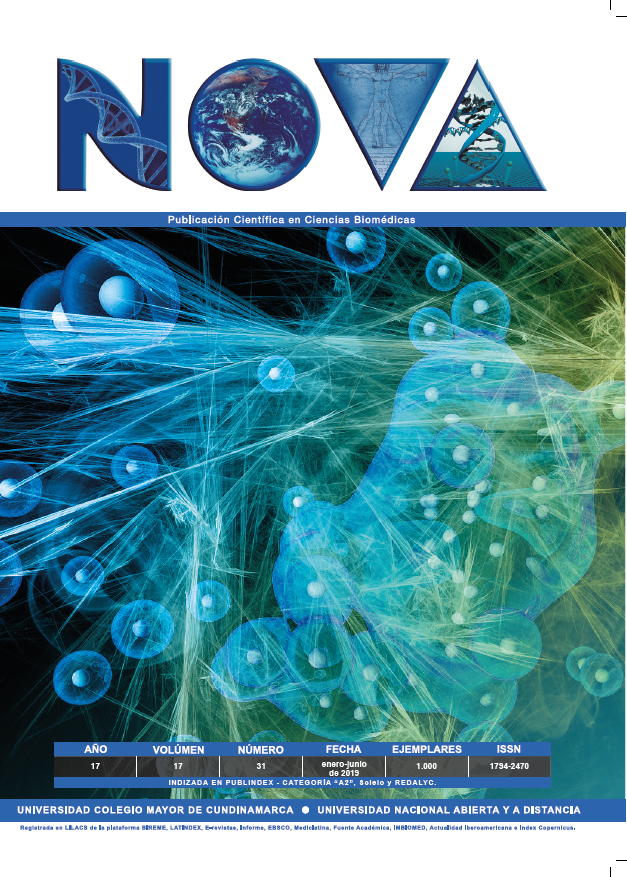NOVA por http://www.unicolmayor.edu.co/publicaciones/index.php/nova se distribuye bajo una licencia Reconocimiento No Comercial- Compartir igual
Así mismo, los autores mantienen sus derechos de propiedad intelectual sobre los artículos,
Declaración de privacidad.
Los nombres y las direcciones de correo electrónico introducidos en esta revista se usarán exclusivamente para los fines establecidos en ella y no se proporcionarán a terceros o para su uso con otros fines.
Diagnosis of the bacteriological quality of the water of the Córdoba Wetland, Bogotá
Objective. To evaluate the sanitary quality of the water of the Córdoba Wetland, using wastewater indicators (total coliforms, Escherichia coli and Enterococcus) and other bacterial groups such as Pseudomonas and Aeromonas. Methods. Fifteen water samples were taken from different points in sectors two and three of the wetland, both in the rainy and dry seasons. The count of microorganisms was carried out by membrane filtration following the Standard Methods. Results. The water of the Córdoba Wetland contain a high number of total coliforms and should therefore not be used for human consumption and domestic, agricultural or recreational purposes. The concentration of Coliforms and Enterococcus confirms the fecal contamination in the ecosystem. This contamination is associated with the dumping of wastewater into the wetland.









